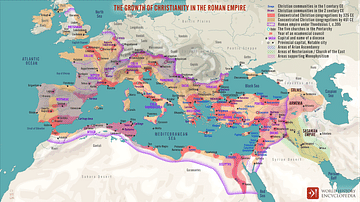Intriguingly, the expansion of Christianity in ancient Rome elicited a response that was both calculated and measured. The Roman authorities, known for their astute governance, adopted a strategic approach towards this burgeoning religious movement. Their reaction can be characterized by an air of caution and vigilance.
A Watchful Eye on Christian Growth
Rome’s ruling elite closely monitored the rapid growth of Christianity within its borders. Recognizing its potential to disrupt social order and challenge traditional beliefs, they employed meticulous surveillance techniques to keep tabs on Christian activities. This scrutiny aimed at preserving the stability and cohesion of Roman society.
Selective Persecution as a Deterrent
To discourage further proliferation, Rome occasionally resorted to targeted persecution against Christians deemed influential or threatening to public order. These acts were not indiscriminate but rather designed with precision; they sought to dissuade others from embracing this new faith while avoiding widespread unrest or rebellion.
Coexistence through Assimilation
However, alongside these measures lay an alternative strategy: assimilation. Rather than outright suppression, Rome attempted to incorporate certain aspects of Christianity into its existing religious framework. By absorbing elements such as moral teachings or rituals compatible with Roman values, they aimed at neutralizing any subversive potential while maintaining control over religious practices.
A Calculated Response for Stability
In conclusion, Rome’s response towards the spread of Christianity was marked by careful calculation and guarded restraint. Through vigilant monitoring, selective persecution when necessary, and attempts at assimilation where possible – all underlined by an overarching desire for societal stability – Rome sought to navigate this new religious landscape without compromising its authority or risking internal discord.

